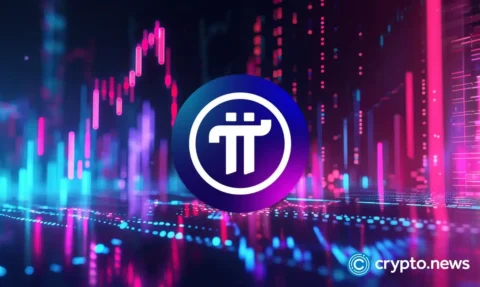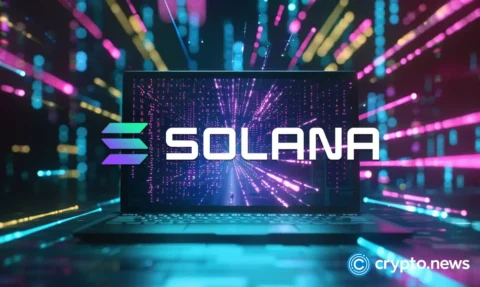Disclosure: The views and opinions expressed here belong solely to the author and do not represent the views and opinions of crypto.news’ editorial.
We’re not heading into the era of digital finance, we’re already knee-deep in it. Up to $5 trillion in assets are expected to go digital this year. That’s not some distant projection. It’s now. Even so, that number is actually a bit shy of earlier predictions. So… what’s slowing things down?
The promise of tokenization is massive. But the reality? It’s complicated. You can’t exactly rip out the pipes while the water’s still flowing. Enterprises are eager to modernize, but not at the expense of compliance, control, or continuity. That’s where hybrid solutions shine.
Think of them as innovation with a seatbelt: built for real-world systems, not crypto sandboxes. By blending control with creativity, they offer a risk-managed path to tokenization without demanding a full leap into decentralization from day one.
Take SWIFT, the longtime backbone of global financial messaging. Its recent pilot with Chainlink didn’t require tearing up the rails. Instead, it layered in blockchain connectivity, plugging new capabilities into systems that already work. That’s the power of interoperability. It turns tokenization from disruption into evolution.
What’s the holdup?
Tokenization, or the transformation of physical or financial assets into digital tokens, promises to revolutionize how value is exchanged. Still, plenty of enterprises are tapping the brakes and asking, “Is now really the time to tokenize?” Some see the upside right away. But there’s a quiet tug-of-war behind the scenes.
It might look something like this: Innovation says go. Compliance says slow. Risk wants certainty. IT sees another integration headache coming. Everyone loves innovation… until it shows up with a to-do list!
For most leaders, the question isn’t whether tokenization makes sense—it’s whether they can pull it off seamlessly. One wrong move can stall progress and invite tough questions from the board or key stakeholders.
This is where hybrid solutions come in. They allow institutions to start small, test quickly, and scale deliberately. Hybrid models meet enterprises where they are, integrating with current systems while unlocking the real-world value of tokenization.
Real estate offers a clear case. Traditionally opaque and illiquid, it’s now being transformed through fractional ownership and expanded access. A $5 million fund could unlock up to $500 million in new capital by lowering entry barriers and reducing operational friction. Instead of months of paperwork and high price thresholds, tokenization enables faster, broader participation. Think of it like crowdfunding, but for billion-dollar assets. A hybrid approach makes this even more practical, connecting tokenized assets to existing financial infrastructure. It not only reduces friction, it levels the playing field.
So the question isn’t just “Should we tokenize?” It’s “How can we do it in a way that’s smart, safe, and scalable?”
So…how should we tokenize?
For enterprises in highly regulated industries, compliance and privacy are foundational. Jumping straight into full decentralization can feel risky, even if it’s not. It brings speed and innovation, yes, but also complexity in governance and control.
Hybrid models shift the mindset from all-or-nothing to progressive and purposeful. By combining the control of private systems with the transparency of public networks, they allow institutions to test new capabilities while safeguarding core operations.
The thing is…breakthroughs don’t have to break things. Innovation can thrive at the edge. A private equity platform can issue public-facing tokens while keeping investor data secure. A real estate firm can record ownership on-chain while conducting due diligence off-chain.
And it’s already happening. Archax, the UK’s first FCA-regulated digital asset exchange, uses DLT to tokenize securities. It preserves compliance workflows privately while anchoring transaction data to public ledgers for trust and auditability. Diamond Standard applies a similar model to physical diamonds: custody and authentication are managed off-chain, while proof of ownership lives on-chain.
This layered approach satisfies regulators, empowers stakeholders, and maintains operational control. That’s why nearly 90% of global enterprises are already exploring blockchain in some capacity, many through hybrid architectures.
No one wakes up thinking, “Let’s disrupt compliance today.” But with hybrid models, you don’t have to. They are built to handle KYC, AML, and data privacy from day one, giving enterprises the freedom to push boundaries without crossing the line.
Setting the pace for a tokenized world
Hybrid models aren’t a compromise. They’re the new blueprint. It’s not just about choosing a platform. It’s about aligning with your goals, risk appetite, and regulatory needs.
The real advantage? Start with private systems, scale into public networks as confidence grows. That’s how many enterprises are testing the waters today, and it’s working.
Not all hybrid models are created equal. The leaders won’t be the loudest or the fastest. They will be the ones who build with purpose.
And let’s be clear: this isn’t a compromise. It’s a competitive advantage. The only question is: will you be left behind?






